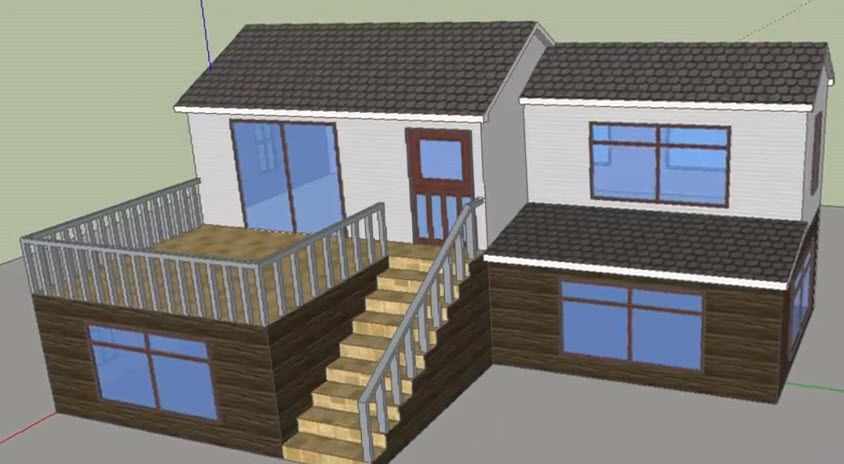
If the visual preview looks different than the model you expected to create, there might be problems with the mesh. For example, a hollow cutout might appear as a solid filled in layer, or vice-versa. It’s a very useful tool and a great way to identify any potential mesh errors with your part. After the preview is loaded, you can even animate the build which will play a video of your nozzle moving around on the screen laying down each individual strand of plastic. You can preview one of these files at any time by pressing the large Prepare to Print! button in the bottom left-hand side of the software’s main window.
#MESHLAB SKETCHUP SOFTWARE#
In addition to creating these files, the software also has the ability to render a visual preview of these instructions, showing you exactly how your printer will interpret the commands. gcode file format) or they may be binary files (such as. These instructions may be plain text (such as the common.
#MESHLAB SKETCHUP HOW TO#
When you are ready to fabricate one of your digital models, the software will create a long list of instructions that tell your printer how to actually create the part. But first, let’s talk about the signs that you might see if your mesh has errors. While this sounds simple enough, there are several common mesh errors that you should keep an eye out for. In this tutorial we are going to talk about self-intersecting surfaces, missing triangles that create holes in the surface of your mesh, backwards triangles, and even duplicate surfaces. If you go to View > Show Normals, the software will also show you a visual representation of the normal vectors used to define your triangles.

Each triangle is represented by 3 edges along with a normal vector from the center of the triangle that defines which side of the triangle is outward facing. After you import a model into the Simplif圓D Software, you can go to View > Wireframe to show the millions of triangles that fit together to define your model. These triangles fit together to define the overall shape of your geometry and they are the basis for the STL and OBJ file formats. Digital models on your computer are typically represented by a large list of triangles. You can leave a response, or trackback from your own site.This tutorial will teach you about common mesh errors that you may encounter with your 3D printer. You can follow any responses to this entry through the RSS 2.0 feed. On Tuesday, June 14th, 2011 at 7:47 am and is filed under Projects. But MAN has it saved me some aggravation.
#MESHLAB SKETCHUP CODE#
I commented out the dialog code and instead included a section at the beginning of the code where you can hard-set your options. The result is my variant of the plugin, which I’ve labeled skp_to_Custom. Somewhere around the 20th time specifying the SAME THING, I decided to go into the plug-in code and just hard-set my options. I’ve been revising a lot of models lately trying things out then checking the resulting tool path in skeinforge. Every time I run the plugin I need to specify “Millimeters” and “STL”. Their skp_to_dxf plugin quickly exports my model into stl format, which can then be read by ReplicatorG.

I’m able to do this easily (and for free) due to the work of Nathan Bromham and Konrad Shroeder. When designing parts for the Makerbot my tool of choice is Google SketchUp.


 0 kommentar(er)
0 kommentar(er)
